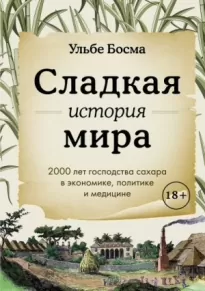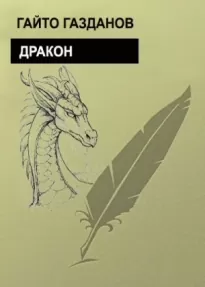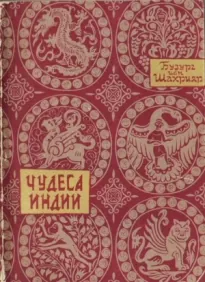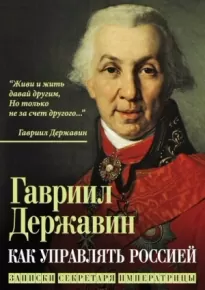Сладкая история мира. 2000 лет господства сахара в экономике, политике и медицине

- Автор: Ульбе Босма
- Жанр: Научная литература / Исторические приключения / История: прочее
Читать книгу "Сладкая история мира. 2000 лет господства сахара в экономике, политике и медицине"
10. Расцвет протекционизма
1 Noël Deerr, The History of Sugar, vol. 2 (London: Chapman and Hall, 1950), 490–491.
2 S.L.Jodidi, The Sugar Beet and Beet Sugar (Chicago: Beet Sugar Gazette Company, 1911), 3, 5; Rudolf Freund, «Strukturwandlungen der internationalen Zuckerwirtschaft: Aus dem Institut für Weltwirtschaft und Seeverkehr,» Weltwirtschaftliches Archiv 28 (1928): 7–8; Em Hromada, Die Entwicklung der Kartelle in der österreichisch-ungarischen Zuckerindustrie (Zurich: Aktien-Buchdruckerei, 1911), 29.
3 Dirk Schaal, «Industrialization and Agriculture: The Beet Sugar Industry in Saxony-Anhalt, 1799–1902,» in Regions, Industries and Heritage: Perspectives on Economy, Society and Culture in Modern Western Europe, ed. Juliane Czierpka, Kathrin Oerters, and Nora Thorade (Houndsmills, England: Palgrave Macmillan, 2015), 138.
4 «Future with Origin,» KWS, дата обращения: 21.12.2021, https://www.kws.com/corp/en/company/history-of-kws-future-with-origin/.
5 Roger G.Knight, Sugar, Steam and Steel: The Industrial Project in Colonial Java, 1830–1850 (Adelaide, Australia: University of Adelaide Press, 2014), 193.
6 Thomas Henry Farrer, The Sugar Convention (London: Cassell, 1889), 3.
7 Цит. по: William Smart, The Sugar Bounties: The Case for and against Government Interference (Edinburgh: Blackwood and Sons, 1887), 47.
8 Farrer, The Sugar Convention, 47.
9 Philippe Chalmin, The Making of a Sugar Giant: Tate and Lyle: 1859–1959 (Chur, Switzerland: Harwood Academic, 1990), 36–37.
10 George Martineau, «The Statistical Aspect of the Sugar Question,» Journal of the Royal Statistical Society 62, no. 2 (1899): 308.
11 F.W.Taussig, «The Tariff Act of 1894,» Political Science Quarterly 9, no. 4 (1894): 603.
12 Chalmin, The Making of a Sugar Giant, 37.
13 George S. Vascik, «Sugar Barons and Bureaucrats: Unravelling the Relationship between Economic Interest and Government in Modern Germany, 1799–1945,» Business and Economic History 21 (1992): 338.
14 Overton Greer Ganong, «France, Great Britain, and the International Sugar Bounty Question, 1895–1902» (PhD diss., University of Florida, 1972), 258–261.
15 F.W.Taussig, «The End of Sugar Bounties,» Quarterly Journal of Economics 18, no. 1 (1903): 130–131; Deerr, The History of Sugar, 2:491.
16 Fritz Georg Von Graevenitz, «Exogenous Transnationalism: Java and ‘Europe’ in an Organised World Sugar Market (1927–37),» Contemporary European History 20, no. 3 (2011): 258.
17 Martineau, «The Statistical Aspect,» 321, 323.
18 B.Pullen-Burry, Jamaica as It Is, 1903 (London: T.F.Unwin, 1903), 183.
19 E.Cozens Cooke, «The Sugar Convention and the West Indies,» Economic Journal 17, no. 67 (1907): 315–322; Edward R.Davson, «Sugar and the War,» Journal of the Royal Society of Arts 63, no. 3248 (1915): 263–266.
20 Paul Leroy Vogt, The Sugar Refining Industry in the United States: Its Development and Present Condition (Philadelphia: Published for the University, 1908), 90.
21 Vascik, «Sugar Barons,» 339.
22 J.Van Harreveld, «Voortdurende Verschuiving van Ruwsuiker naar Wit-Suiker,» Archief voor de Suikerindustrie in Ned.-Indië 33, no. 2 (1925): 1279.
23 Hendrik Coenraad Prinsen Geerligs, De Rietsuikerindustrie in de Verschillende Landen van Productie: Historisch, Technisch en Statistisch Overzicht over de Productie en den Uitvoer van de Rietsuiker (Amsterdam: De Bussy, 1931), 35–36.
24 Ulbe Bosma, The Sugar Plantation in India and Indonesia: Industrial Production, 1770–2010 (Cambridge: Cambridge University Press, 2013), 171.
25 C.Y.Shephard, «The Sugar Industry of the British West Indies and British Guiana with Special Reference to Trinidad,» Economic Geography 5, no. 2 (1929): 155.
26 Freund, «Strukturwandlungen,» 34.
27 См.: Bessie C.Engle, «Sugar Production of Czechoslovakia,» Economic Geography 2, no. 2 (1926): 213–229.
28 Quentin Jouan, «Entre expansion belge et nationalisme italien: La Sucrerie et Raffinerie de Pontelongo, image de ses époques (1908–1927),» Histoire, Économie et Société 34, no. 4 (2015): 76; Manfred Pohl, Die Geschichte der Südzucker AG 1926–2001 (Munich: Piper, 2001), 129.
29 Bill Albert, «Sugar and Anglo-Peruvian Trade Negotiations in the 1930s,» Journal of Latin American Studies 14, no. 1 (1982): 126–127.
30 Von Graevenitz, «Exogenous Transnationalism,» 261.
31 C.J.Robertson, «Geographical Aspects of Cane-Sugar Production,» Geography 17, no. 3 (1932): 179; Bosma, The Sugar Plantation, 159–160, 162.
32 Brian H.Pollitt, «The Cuban Sugar Economy and the Great Depression,» Bulletin of Latin American Research 3, no. 2 (1984): 8, 13.
33 Анонимный автор, «Irrigation of Atrophy?» Sugar: Including Facts about Sugar and the Planter and Sugar Manufacturer, 41, no. 10 (1946): 26–28; Reinaldo Funes Monzote, From Rainforest to Cane Field in Cuba an Environmental History since 1492 (Chapel Hill: University of North Carolina Press, 2008), 228, 229, 256, 261, 272.
34 В «Международную конфедерацию европейских производителей сахарной свеклы» (CIBE) входили ассоциации национальных производителей Германии, Австрии, Бельгии, Франции, Венгрии, Италии, Польши и Чехословакии, а ее неофициальными членами были Нидерланды и Швеция. См.: Francois Houillier and Jules Gautier, L’organisation internationale de l’agriculture: Les institutions agricoles internationales et l’action internationale en agriculture (Paris: Libraire technique et economique, 1935), 164.
35 Michael Fakhri, Sugar and the Making of International Trade Law (Cambridge: Cambridge University Press, 2017), 92–93.
36 Houillier and Gautier, L’organisation internationale, 165.
37 Chalmin, The Making of a Sugar Giant, 151.
38 Bosma, The Sugar Plantation, 216.
39 Bosma, The Sugar Plantation, 217.
40 John.T.Flynn, «The New Capitalism,» Collier’s Weekly (March 18, 1933): 12.
41 Clifford L.James, «International Control of Raw Sugar Supplies,» American Economic Review 21, no. 3 (1931): 486–489.
42 De Indische Courant, December 9, 1930.
43 Bosma, The Sugar Plantation, 217–218.
44 Arthur H.Rosenfeld, «Een en Ander omtrent de Suiker-Industrie in Formosa,» Archief voor de Suikerindustrie in Ned.-Indië 37, no. 2 (1929): 1024–1026, английский перевод сделан по изданию: International Sugar Journal, 31, no. 369 (September 1929).
45 Cheng-Siang Chen, «The Sugar Industry of China,» Geographical Journal 137, no. 1 (1971): 30.
46 De Locomotief, February 12, 1932.
47 См.: Von Graevenitz, «Exogenous Transnationalism»; Anno von Gebhardt, Die Zukunftsentwicklung der Java-Zucker-Industrie unter dem Einfluß der Selbstabschließungstendenzen auf dem Weltmarkt (Berlin: Ebering, 1937), 135; James, «International Control,» 490–491.
48 Gebhardt, Die Zukunftsentwicklung, 56; Bosma, The Sugar Plantation, 220.
49 Gail M.Hollander, Raising Cane in the ’Glades: The Global Sugar Trade and the Transformation of Florida (Chicago: University of Chicago Press, 2009), 116.
50 Pollitt, «The Cuban Sugar Economy,» 15–16.
51 Theodore Friend, «The Philippine Sugar Industry and the Politics of Independence, 1929–1935,» Journal of Asian Studies 22, no. 2 (1963): 190–191.
52 Guy Pierre, «The Frustrated Development of the Haitian Sugar Industry between 1915/ 18 and 1938/39: International Financial and Commercial Rivalries,» in The World Sugar Economy in War and Depression 1914–40, ed. Bill Albert and Adrian Graves (London: Routledge, 1988), 127–128.
53 Soerabaiasch Handelsblad, July 9, 1937, extra edition.
54 Muriel McAvoy, Sugar Baron: Manuel Rionda and the Fortunes of Pre-Castro Cuba (Gainesville: University Press of Florida, 2003), 203.
55 Von Graevenitz, «Exogenous Transnationalism,» 278–279.
56 Fakhri, Sugar, 120; Kurt Bloch, «Impending Shortages Catch Sugar Consumers Napping,» Far Eastern Survey Far Eastern Survey 8, no. 12 (1939): 141.
57 Eastin Nelson, «The Growth of the Refined Sugar Industry in Mexico,» Southwestern Social Science Quarterly 26, no. 4 (1946): 275; Roger Owen, «The Study of Middle Eastern Industrial History: Notes on the Interrelationship between Factories and Small-Scale Manufacturing with Special References to Lebanese Silk and Egyptian Sugar, 1900–1930,» International Journal of Middle East Studies 16, no. 4 (1984): 480–481.
58 Plinio Mario Nastari, «The Role of Sugar Cane in Brazil’s History and Economy» (PhD diss., Iowa State University, 1983), 77–79; Barbara Nunberg, «Structural Change and State Policy: The Politics of Sugar in Brazil since 1964,» Latin American Research Review 21, no. 2 (1986): 55–56.
59 Peter Post, «Bringing China to Java: The Oei Tiong Ham Concern and Chen Kung-po during the Nanjing Decade,» Journal of Chinese Overseas 15, no. 1 (2019): 45.
60 H.Y.Lin Alfred, «Building and Funding a Warlord Regime: The Experience of Chen Jitang in Guangdong, 1929–1936,» Modern China 28, no. 2 (2002): 200–201; Post, «Bringing China,» 53–55; G.R.Knight, Commodities and Colonialism: The Story of Big Sugar in Indonesia, 1880–1942 (Leiden: Brill, 2013), 150, 220.
61 Erika Rappaport, A Thirst for Empire: How Tea Shaped the Modern World (Princeton, NJ: Princeton University Press, 2017), 234–252.
62 H.D.Watts, «The Location of the Beet-Sugar Industry in England and Wales, 1912–36,» Transactions of the Institute of British Geographers, no. 53 (1971): 98–99.
63 Albert, «Sugar and Anglo-Peruvian Trade,» 127; C.J.Robertson, «Cane-Sugar Production in the British Empire,» Economic Geography 6, no. 2 (1930): 135; Michael Moynagh, Brown or White?: A History of the Fiji Sugar Industry, 1873–1973 (Canberra: Australian National University, 1981), 119.
64 Chalmin, The Making of a Sugar Giant, 75; Hermann Kellenbenz, Die Zuckerwirtschaft im Kölner Raum von der Napoleonischen Zeit bis zur Reichsgründung (Cologne: Industrieund Handelskammer, 1966), 92.
65 Darra Goldstein, The Oxford Companion to Sugar and Sweets (Oxford: Oxford University Press, 2015), 307.
66 Carl Henry Fe, «Better Must Come: Sugar and Jamaica in the 20th Century,» Social and Economic Studies 33, no. 4 (1984): 5.
67 David Hollett, Passage from India to El Dorado: Guyana and the Great Migration (Madison, WI: Fairleigh Dickinson University Press, 1999), 56–63.





